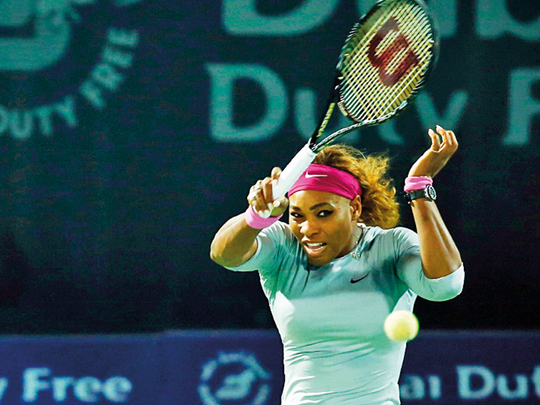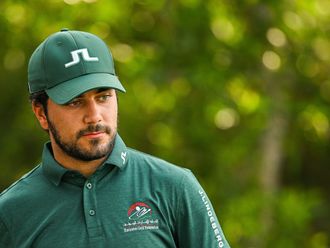
Lawler brings close to three decades of sports and entertainment expertise to the role, during which time she played an important factor in expanding the global footprint of women’s tennis, including the development of important initiatives in China. She has driven growth in all aspects of the tennis business across athletes, events, sponsorship sales and consultancy. In addition, she has provided strong strategic leadership during her 11 years as a WTA board member, a role to which she dedicated an enormous amount of time in recent years. Before joining Octagon, Lawler began her sports career in communications at the Men’s International Professional Tennis Council, the predecessor to the ATP World Tour.
Q. How has the evolution of the game been in recent times? The ups and the downs?
A. The WTA Finals in Singapore were the best ever. Everything around it was so fantastic. There was great crowds, lovely atmosphere and the fact that women’s tennis keeps becoming more and more competitive. People say matches are lacking the stars that keep winning consistently. That’s true, but the upside is that we have many more stars today than any other time in our sport. There is no defined dominance. The depth of field is tremendous and the level of tennis, even at the Grand Slams where the men and the women are completely integrated, we have people make comments like ‘wow, the women were incredible and I almost prefer watching women’s tennis’. Tennis is tennis and we love men’s tennis. I love watching men’s tennis and I love watching women’s tennis. But the best thing for me is having the game growing in all parameters.
Q. The WTA Finals now move to Shenzen … how important will this be for the sport?
A. This is by far the biggest deal in the history of the game with the shifting of the Finals to Shenzen. That’s testament to the work done by the tournament and by the Singapore team — the Singapore Tourism and Singapore Sports Group. And it shows the work that everyone has done.
Q. What is life going to be after the Williams sisters?
A. I would ask ‘is there life after the Williams?’ I hope so. You know this is the question that gets asked every time we have a great player come and go. We had this same question after Chris [Evert Lloyd] and Martina [Navratilova], after [Steffi] Graf, [Gabriela] Sabatini, [Monica] Seles, [Jennifer] Capriati. These are all individual champions for a reason. There have never been sisters like Venus and Serena Williams. There will never be anyone like them, and that’s for sure. And in the same breath, there will never be another Graf and another Capriati and another Navratilova and Seles. That’s the beauty of the game. It is the individual features that make them incredible champions and so unique. They have their own identity. And tennis will triumph.
Q. Is the women’s game headed in the right direction?
A. Yes, it is. And I think that it will always be. We will always need to keep performing and doing something new all the time. We have come a long way. This is the 45th anniversary and to look at everything that has been done to be where we are is an amazing experience. We all had a chance to watch the ‘Battle of the Sexes’ documentary in London [during Wimbledon last year] and we saw how people like Billie Jean King fought to put us where we are today. It brought tears to my eyes because of what they did to push for this opportunity for women today. It made me very proud and made me wish for all players to see it and to never neglect the history of the game.
Q. What could be the possible improvements to take women’s tennis to the next level?
A. In terms of making the sport more even with the men’s, I think the most ideal tennis product is when the men and the women are together, that is, a combined product. Would I like to have separate Olympics for the men and women? No. What is more important is the atmosphere of both genders, of both extraordinary performances and athletic abilities coming together. That is the most ideal product. I do wonder some time for a fan, especially nowadays when the attention span is shorter, and think ‘do we have to do something to make tennis shorter? Do we have to look at a third set long tie-breaker, do we have to look at no second serve? All these things are there to be looked at. You want to maintain the traditional aspects of tennis as that is what makes the game. It is one of the features of the sport. When there is so much competition on the entertainment side, one would think that we ought to look at that. And I would also think that we need to be consistent and not have this format and that format and all kinds of tennis even though some people like that. But then experience has shown us that such trends didn’t last for long.
Q. It’s only February and injuries abound among the women. Is that an area that concerns you in some way?
A. Yes, it does concern us. And the thinking is that we need to look continuously at finding a balance between job opportunities and making sure the players who play deep every week are protected. So maybe we need to take a serious look at smaller draws, at giving the top players later starts so that they have enough opportunity to rest and recoup. The more and longer the player plays, it means he has been around the world more and the body will start to break down and that is a lot to handle physically and emotionally.
Q. While China continues to boom, countries like India and the Middle East region don’t seem to have caught on with tennis. What sort of measures you think need to be taken?
A. I think we need to work even more with the ITF. We are investing in future stars. In Singapore we started with two events, the under-14, under 16 and we are now at under-18 events. We are coming closer and doing much better. But it is equally important that the federations work hard at the grassroots level in every country and make sure that tennis is attractive to the kids. They also need to be exposed to other sports, but it is really important to provide the opportunities. We hope that with a tournament like this and an investment by the DDF is exposing kids to the best in the tennis world. I hope that that motivates a lot of kids. Yesterday I was talking to a father in the village, whose daughter is a ball kid. She had been on court for the Kasatkina-Muguruza match. And he told me about the impact it was having on her life. These are the stories that motivate and inspire kids and others as well. I started off as a ball kid myself, so I can well understand the role such things can play.












